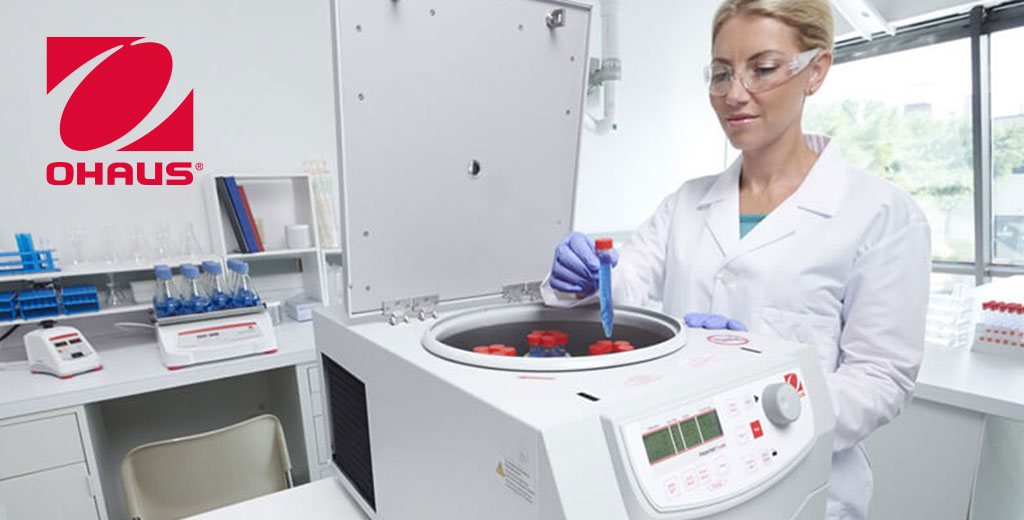A high-speed centrifuge is a common sight in laboratories. They are essential for liquid and gas sample separation based on density. Scientists rely on them when studying cells, proteins, viruses, and more. However, there are concerns that necessitate both careful selection of a high-quality centrifuge and safety training to ensure an accident-free laboratory.
If used improperly, centrifuges can pose safety risks because of the high centrifugal forces generated by the rotor during use. Improper installation of the rotor or sample imbalance can result in damaged equipment, ruined samples, and, at worst, serious injury. Sample container breakage is a very real concern as broken glass can cut or otherwise injure the operator, leaked liquids may cause burns or skin irritation and released aerosols can be harmful if inhaled.
These tips from OHAUS will help to ensure safe operation.
Before operation:
- Make sure centrifuge bowls and tubes are dry and the spindle is clean.
• Do not overfill tubes or containers.
• Use safety cups/buckets to contain potential spills and prevent aerosol leakage.
• Ensure that the rotor is properly seated on the drive shaft.
• Make sure that tubes or containers are properly balanced in the rotor.
• Only check O-rings on the rotor if you are properly trained.
• Follow the manufacturer’s guidelines for maintenance and operation.
During operation:
- Never exceed the rotor’s maximum run speed.
• Keep the centrifuge lid closed during operation.
• Check that the centrifuge is operating normally before leaving the area.
• Do not open the lid until the rotor has come to a complete stop.
• If a spill occurs, use appropriate decontamination and clean-up procedures; use tweezers to remove broken glass.
After operation:
• Clean rotors and accessories using neutral cleaning solutions and a soft cloth.
• Do periodic visual inspections of rotors to check for residue and corrosion.
• Inspect the rotor for cracks or nicks and replace rotors that show any signs of wear or damage.
To ensure safe operation, reliability, and long life of your centrifuge it is essential to take proper care of the unit and rotors between usage. For maintenance tips, refer to the OHAUS Centrifuge and Rotor Maintenance & Cleaning Guide.
Download the PDF here


